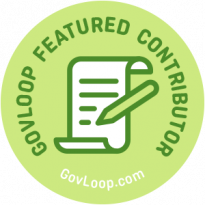Public trust in the U.S. federal government has been a challenge for generations. Just 21% of Americans trust the federal government to do what’s right most of the time, according to recent Pew Research Center data. This gap between citizens and their government is an opportunity for transformation.

Many public sector agencies see open data initiatives as a cornerstone of rebuilding public trust. Once mandated to release information, agencies now aim to make data valuable and accessible. They are creating tools and platforms that let citizens engage with public data, track government performance, and hold institutions accountable.
The Path to Government Transparency
The federal government’s open data effort shows how lasting reform can be tackled in steps. Data.gov, for example, launched with 47 datasets. Now, it hosts over 300,000 public datasets. The DATA Act made transparency a requirement, not an aspiration. USAspending.gov now tracks federal dollars in ways that seemed impossible a decade ago. The Evidence-Based Policymaking Act made open data the default and required federal agencies to hire chief data officers to build data-centric cultures for future changes.
From Data Dump to Useful Tool
These laws kicked off a wave of innovation across government. The Department of Transportation, for example, ushered in a new era of more collaborative and transparent project planning by working closely with state and local governments and gathering all sorts of information, such as soil conditions, weather patterns, and other environmental factors from different agencies. The Federal Aviation Administration also freely shares its flight data, allowing private companies like FlightRadar24 and FlightAware to provide real-time flight tracking services to the public.
Some agencies develop tools that make complex government helpful information for everyday decisions. Through its Open Payments database, the Centers for Medicare and Medicaid Services lets people see exactly how much money drug companies pay doctors — information that was once hidden from public view. The Consumer Financial Protection Bureau created a database where people can see complaints about financial companies, helping others avoid similar problems.
State and local governments tend to see higher rates of trust than the federal government, but they’re upping their open data initiatives, too. Washington State recently gave its public data website, first launched in 2011, a fresh makeover. The new design helps people quickly find what they’re looking for, such as checking if a contractor is licensed, looking up their doctor’s credentials, or seeing who’s running for office. Instead of filing formal requests, residents can now get this information with just a few clicks. With nearly 3 million views of its healthcare provider database alone, it’s clear that residents are finding the information useful, and the state plans to make the website even more user-friendly.
The Next Steps for Open Data
The new challenge on the horizon is getting agency data AI-ready. Agencies must clean datasets, add better descriptions, and ensure that computers can easily process the data. Agencies must push their data from the current machine-readable standard to becoming machine-understandable.
Earlier this year, the Commerce Department launched the AI and Open Government Data Assets Working Group to develop new guidelines for publishing the agency’s data, enabling generative AI tools like ChatGPT to consume it. The goal is to let users explore the agency’s data using plain language rather than specialized skills or expertise. The working group’s efforts could also allow AI models to use Commerce data and links, and, most importantly, expand access to information from authoritative sources.
The message is clear: the future of open data is to ensure that both people and computers can use it. Open data initiatives are about making government work better for everyone through transparency, accountability, and democratizing access to information. Open data isn’t just about putting spreadsheets online; it’s about sharing trustworthy information that constituents can use in their daily lives. Data-driven decision-making isn’t just for agencies; it’s for people, too.
To learn more about how public sector agencies are currently leveraging open data initiatives, take a look at this whitepaper, “Optimizing the Citizen Experience to Unlock the Value of Your Open Data Initiatives.”
Michael Shrader is Vice President of Intelligence and Innovative Solutions (IIS) at Carahsoft. In his role, he oversees a team of 300+ employees that supports over 250 technology vendors, driving over $2B in annual bookings. Michael’s teams help vendors penetrate the government market by supporting sales, marketing and go-to-market strategy. This support extends into educating technology vendors on how best to work with government, while also helping government understand how they can benefit from embracing new and innovative solutions.
Michael has received numerous distinctions for his work including the CRN Channel Chiefs Award and the FCW Rising Star Award.





Leave a Reply
You must be logged in to post a comment.